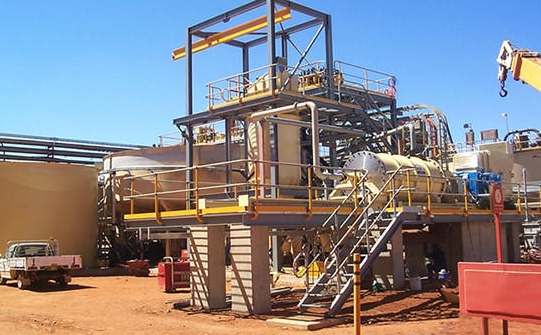- 13
- Nov
Noble metal roasting furnace furnace refractory construction process and masonry requirements
Noble metal roasting furnace furnace refractory construction process and masonry requirements
The furnace masonry process and requirements of the precious metal ore roasting furnace are assembled and aggregated by the refractory brick manufacturer.

The furnace of the precious metal roasting furnace has a circular structure, including five parts: hearth lining, lower straight section furnace wall lining, cone section furnace wall lining, upper straight section furnace wall lining, and furnace roof arch lining.
1. Conditions for roasting furnace construction:
(1) The furnace shell of the roasting furnace has been installed and passed the inspection.
(2) The temperature of the construction environment shall not be lower than 5°C, and if it is lower than 5°C, it shall be treated according to the winter construction plan.
(3) Strictly control the types, quantity and quality of refractory materials that have entered the site to ensure that they meet the design and construction requirements and can meet the requirements of the construction schedule.
2. Baking furnace construction procedures and requirements:
(1) Construction process:
Furnace shell acceptance and set-up operations → installation of scaffolding and lifting frame → graphite powder water glass anti-corrosion coating on the inner wall of the furnace shell, asbestos insulation board → furnace working layer, insulation layer light and heavy refractory brick masonry → furnace roof refractory brick masonry →Remove the lifting frame→Remove the scaffolding→Distribution plate refractory castable construction and maintenance→Cleaning of the construction area and completion and delivery.
(2) Construction technical measures:
1) Scaffolding installation:
The inner scaffold for the lining of the roasting furnace uses fastener-type steel pipe scaffolds to provide construction personnel with walking and construction purposes. Therefore, it must be built in accordance with the design requirements to ensure its stability and stability.
2) Transportation of refractory materials:
Horizontal transportation: The refractory materials in the construction site are generally transported by rack trucks, supplemented by manual handling, and construction personnel and refractory materials can enter and exit from the furnace shell manhole.
Vertical transportation: Use the lifting frame erected inside and outside the furnace to move the refractory materials and the construction personnel up and down.
3) Production of arch tires and templates:
Furnace manholes and other arched masonry required arch tires and casting materials required for construction should be completed on site according to requirements.
4) Screening refractory bricks:
After all the refractory bricks enter the site, they are classified according to different materials and specifications and stored in an orderly manner. The refractory bricks with serious missing corners, cracks, bending and other defects are selected and cannot be used for masonry. They can be reserved for processing bricks. .
5) Pre-laying and processing refractory bricks:
In order to ensure the construction process, the refractory bricks of the vault and each hole are generally pre-built to judge the processing and matching use of the refractory bricks. It can also check whether the construction support system is firm and reliable, and whether the abrasive tools are designed and required. Construction problems are discovered and solved in advance through pre-masonry, so that the construction personnel can better understand the masonry order, quality requirements and use of refractory materials.
a. The pre-masonry of the masonry is the same as the formal masonry, the difference is that the wet masonry is changed to the dry pre-laying, and the expansion joint should meet the design and construction requirements.
b. The prefabrication of the vault bricks should be carried out on the ground under the same conditions as the actual conditions, and the prefabrication of each hole can be carried out in the construction shed or on the ground of the construction site.
c. Hole masonry masonry uses special-shaped refractory bricks. When pre-masonry, the masonry refractory brick masonry error size should be strictly controlled according to the design requirements. When the error is too large to meet the masonry requirements, the refractory bricks should be processed to Ensure that the quality of masonry construction meets the requirements of construction design.
d. After the pre-masonry of the holes and vault refractory bricks is completed and the inspection is correct, the refractory bricks are numbered and marked, so that the formal masonry can be carried out accurately and smoothly.
6) Furnace shell inspection, acceptance and setting-off:
After the furnace shell is installed and passed the acceptance, pull out the center line of the furnace body, and retest the ovality of the furnace shell and the masonry elevation of each part. The layer height line is marked.
